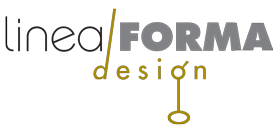I recently joined a new gym, and attempted to use each piece of Nautilus equipment following the instructions posted on each machine. Each has an illustration of a person using the machine with color shapes applied to the parts of the body being worked, along with several paragraphs of how to use the device. In tiny unreadable type at the bottom are the safety tips. I wonder what it says…
Without a fitness trainer providing an orientation, I don’t think anyone would understand how to use the machines correctly, or safely, based on those illustrations alone. And frankly, I don’t think all the text is helpful in explaining this physical, visual experience. I found it all confusing.
An athletic/orthopedic ankle brace manufacturer supplies a printed sheet of paper with six 1” square photos of the black product at various stages of attachment, and accompanying text. The black color of the product and small size of the photos, as well as two hands covering parts of the product, really don’t fully explain the process, and left me confused.
The Swedish retailer IKEA is known for its ready-to-assemble furniture, and wordless printed instructions with generic humans and very simple artwork, geared for a world marketplace. If one is mechanically inclined, the instructions usually work pretty well, but they still leave room for improvement, as far as explaining the tasks to perform. Still confusing.
All of this is changing in the new era of “how-to” or explainer videos, which is where I come in. Simply put, they are short, fun and informative videos that are entertaining, easy to watch, and capture the viewer’s attention in a more effective way than just photos, drawings or text can. A static photo or drawing always ends up covering parts that are behind other parts, including the user’s body parts. By adding movement, the view can change during the action, revealing more of the whole picture. If a picture is worth a thousand words, a moving picture must be worth ten thousand words. No more confusion. Like this video below—much more information about the valve function than the illustration above:
The perfect use of these videos is to demonstrate a) the specific features of a product; or, b) how a process works. Features and processes. Photography can be used, if done carefully. But whenever possible, I prefer to build a 3D model that I can manipulate and control in great detail. The model also allows me to leave out anything from the scene that does not further the story … let’s call it “the clutter”. In photography, removing the clutter from the shot is the photographer’s first challenge, and it’s usually a time-consuming one. With a model, there is no clutter. I only build what is needed to tell the story.
My favorite part of digital storytelling is: nothing needs to be printed. As long as the user has a smartphone, a tablet device, a laptop and an internet connection, the instruction is a click or two away. So, in my three examples above, the Nautilus equipment could have a video screen on the machine, or using on-site wi-fi, with detailed steps of the process that can be watched as often as needed. The ankle brace supplier could have video at their website or YouTube to see how to use the product. And the IKEA customer could build their new dresser watching the steps on their tablet or laptop.
The future is now. The internet connection is almost everywhere, and motion now can better tell the story.
Say goodbye to confusion. Pretty exciting stuff. And, fun to make.
Share this:


8 Responses
Veda Nomura
Bill, I really enjoyed your post “Let Me Explain”. I have been in many situations where I have thought a video would be much better than pictures. Case in point, going to the PT. When I had physical therapy for my knee a few years ago, they showed me the exercises in their office and then handed me some papers with a few pictures and a description of the exercise. I commented to the PT that it would be much better to have access to a video that would show me how to correctly do the exercise (similar to your experience in the gym).
bgob1
Exactly, Veda. And that’s where I come in…..
Gayle
Bravo!! Another great read about something that could have been boring. Love these. You had me at “I wonder what it says…” Hahahaha
bgob1
Thanks, Gayle. Not just me, eh?
mark johnson
Interesting stuff
More interesting to hear that Travis is doing well
Mark Johnson
bgob1
Thanks, Mark. All good out here.
TeeeBeee
GeeeOHBeee
Great…as Elvis Costello and Arnold would say……Here to Pump It Up…that’s Gym and Roll talk.
Hope all is well in your land.
bgob1
Thanks TB. All is well here.